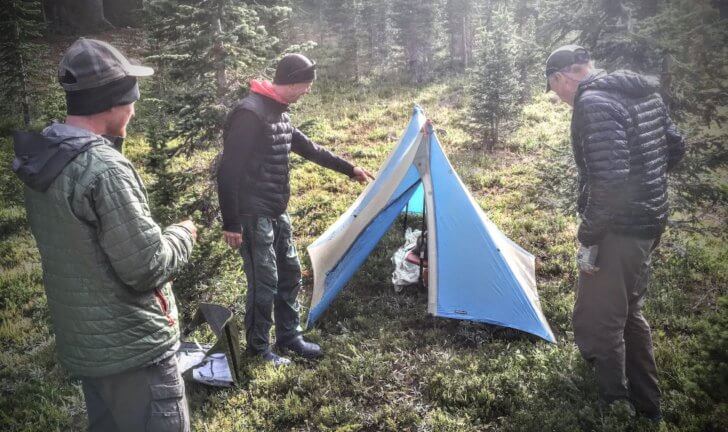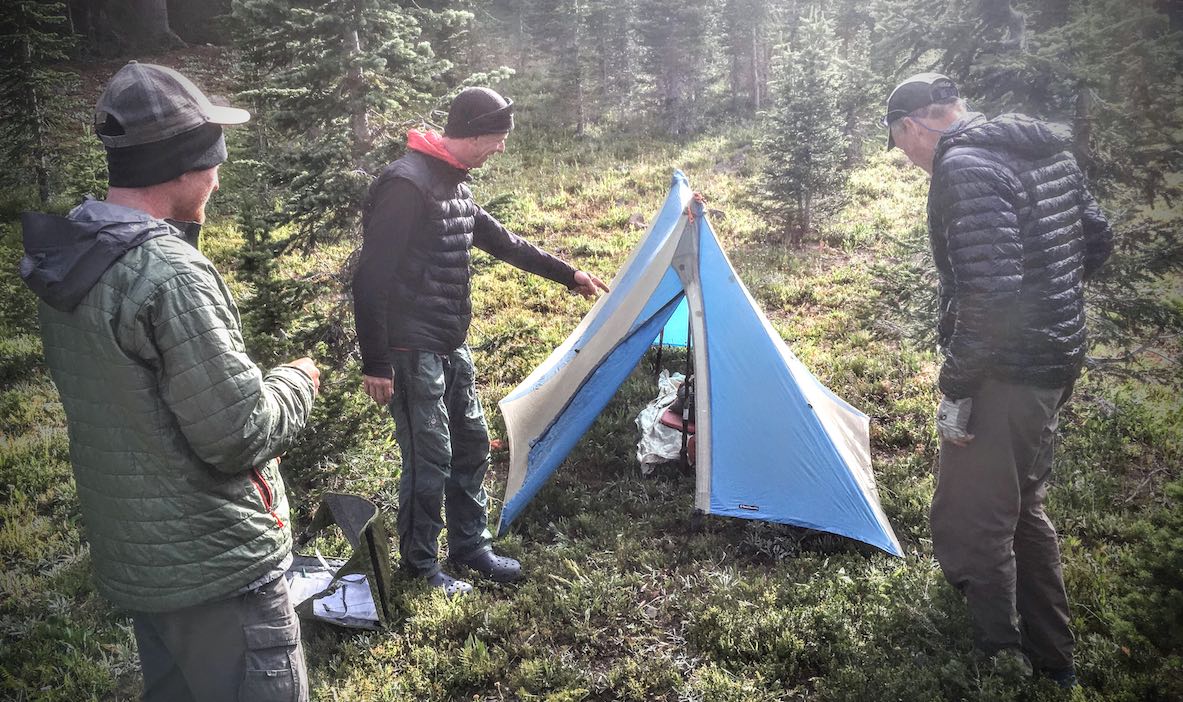By Emylene VanderVelden and Ryan Jordan
Introduction
How to choose lightweight backpacking gear is an individualized and challenging skill.
When purchasing and packing gear, lightweight and ultralight backpackers can be prone to gram shaving for the sake of gram shaving. But don’t overlook the role of comfort, durability, safety, and aesthetics in backpacking equipment, either.
Your development as a backpacker can occur when you progressively and intellectually process gear selection in a self-aware and intentional manner. Lack of intentionality in gear selection can lead to pack weights that are heavier than they need to be and gear that may not be optimized to your style or application (e.g., environment, weather, season).

A best practice for how to choose lightweight backpacking gear requires some cognitive finesse and is valuable for beginner and seasoned backpackers alike. No backpacker has ever mastered the art, and we all can make constant improvement.
We wrote this article to provide one example of a comprehensive framework that you can use as a model for selecting lightweight backpacking gear. Adapt it to your needs.
Part 1. How to Choose Lightweight Backpacking Gear: The Core Process
The process that we invoke to build our “kit of lightweight backpacking gear” focuses on the central tenet that
A hiker’s core needs are identified first; then a functional (i.e., performance) system can be designed; and then the equipment components of the physical system can be selected to serve the goals of that functional system (which in turn meets the hiker’s core needs).
Let’s illustrate this with a case study by which three different lightweight backpackers have three distinct perspectives on identifying their equipment needs. We’ll use their trail names to protect their real identities.
Talus Tom: the Gear Head
Talus Tom is a gear head and owns one of everything. He’s a hardcore mountaineer, a financial analyst, has a degree from Cal, and thinks thru-hikers are wandering hippies who just can’t get a job.
He already owns a variety of shelters, but missing from his arsenal is a real tent (whatever that means). Thus, Tom needs a tent.
Tom can tell you, from memory, who makes tents that weigh less than two pounds, what materials they are made from, how many stakes they require for a taut pitch, and what the usable interior volume is for each model down to the nearest tenth of a square foot.
Zero Drop Zoë: Maslow’s Protégé
Zero Drop Zoë is more practical about how to choose lightweight backpacking gear. She studied Maslow’s hierarchy in college. Thus, Zoe needs a shelter.
Zoë has tattoos and piercings, and she meditates. She’s not super geeked out on the technical details of shelters like Tom is, but she knows what types of shelters are available: tarps, pyramids, single wall tents, double wall tents, bivy sacks, hammocks, and the assorted hybrid shelters that keep popping up on the cottage manufacturer’s websites. Zoë has thru-hiked the PCT, and she’s seen all types of shelters.
Sedona Sam: In Touch With Nature, Not Gear
Sedona Sam is a bit more in touch with his inner needs but quite out of touch with the state of the market. Sam needs a comfortable night’s sleep.
Sam knows that there are tents and tarps, but isn’t aware of much else. He read a blog post once that told him how to sleep warm under a tarp, so that sounds good to him. He read another one that said that a double wall tent provided the most comfort and that one also sounded good to him.
Sam has no idea that pyramids exist outside of Egypt, and isn’t aware that hammocks are used for anything except lounging and playing the guitar in the Keys like he saw in that one Kenny Chesney music video.
A Trichotomous Chaos
Tom has identified his equipment (a sweet tent), Zoë has identified a function (a useful shelter), and Sam has identified his core need (a restful sleep).
Are you a Talus Tom, Zero Drop Zoë, or Sedona Sam?
If the three of them formed a little committee and put their heads together, we are willing to bet that they’d be able to help each other out. All of their perspectives are useful.
But by themselves, they may have trouble figuring it out.
Sam has identified his core need: he wants to sleep comfortably, and is off on the right foot (even under the influence of a Sedona Vortex). But he may decide to buy an apartment at the Waldorf, or have a Peyote campfire in the evening, to meet that need. Sam knows his need but doesn’t know exactly how best to meet it in the context of a backpacking trip.
Zoë has identified her functional need: she knows she needs a shelter. She’s pretty inspired by Sam, and she wants to sleep comfortably, too. Sam got her thinking that she not only needs a reasonable shelter to sleep comfortably, but she may want to consider her sleeping pad, sleeping bag, pillow, sleep clothing, earplugs, evening meal, and a short isometric routine before bedtime to warm up on those chilly nights.
Tom has identified an equipment need: a tent. Originally, Tom thought Sam was cracked because he was from Sedona (he also had a little bit of a crush on Zoë, so he upgraded his gear needs to a two-person tent and a promise to God). But in the end, Tom realized that he may learn something by spending a little time in a Vortex and listening to how thru-hikers manage to walk thousands of miles in a row with so little gear.
In summary, we have discussed the three processes that comprise our framework for selecting lightweight backpacking gear:
- Identify your core need.
- Design a functional gear system that meets that core need (see #1).
- Select the lightest equipment available to perform that function (see #2).
In the context of what’s been presented so far, we may identify the core need as “a comfortable night’s sleep.” The functional needs may include:
- Warmth (shelter, sleeping, clothing);
- Body posture comfort (sleeping pad, pillow);
- Noise reduction (a non-flappy shelter, earplugs);
- Biting insect resistance (some type of enclosure).
Then, with additional research, we can formulate a more intentional process for how to choose lightweight backpacking gear.
Let’s dive in and apply the framework in more detail.
1. Core Needs
Member Exclusive
A Premium or Unlimited Membership* is required to view the rest of this article.
* A Basic Membership is required to view Member Q&A events




Home › Forums › How to Choose Lightweight Backpacking Gear: A Process Model Based on Core Needs, Functional Systems, and Equipment Components